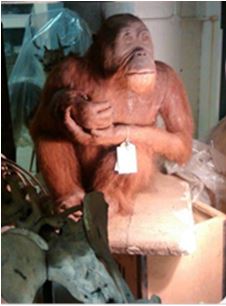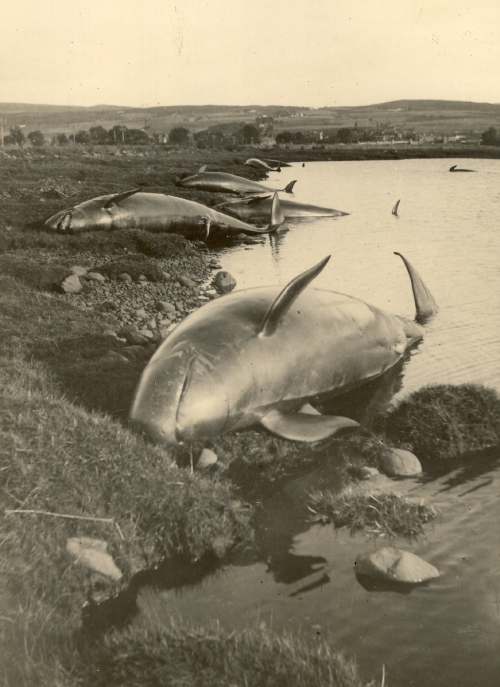Wonderful Whale 33: The Discovery
Posted on by Fay Curtis.
By Bonnie Griffin, Natural History curator
You may find some of the images in this blog post upsetting.
For many years the head of a huge whale has been sitting on a shelf in the biology store, with its only markings being the numerals XXXIII and a label ‘False Killer Whale?’.
 Whale 33 had been shrouded in mystery until this year, when a research project uncovered an amazing story.
Whale 33 had been shrouded in mystery until this year, when a research project uncovered an amazing story.
While reviewing the store one day, I came across an old tea crate under Henry the orangutan. To my delight the label stated :
False killer whale (skeleton of female) number XXXIII of a number of whales stranded on Dornoch Firth, NE. Scotland in October 1927.
It seemed Henry had been guarding a secret, keeping the rest of the whale hidden underneath his lovely ginger derriere!
 We could match the skeleton unequivocally with its skull and for the first time knew she was female. We also knew the cause and location of death; she was one of at least 33 whales tragically stranded in Scotland.
We could match the skeleton unequivocally with its skull and for the first time knew she was female. We also knew the cause and location of death; she was one of at least 33 whales tragically stranded in Scotland.
But what was a whale who died in Scotland doing in Bristol Museum & Art Gallery?
I began researching more information on the whale, hunting down old news reports from 1927. The first name to pop up was that of Martin Hinton, who worked at the Natural History Museum from 1921 -1945.
An article in evolve Magazine, reveals that Hinton went straight to Scotland at the news of a ‘huge’ school of whales being beached [1].

Stranded ‘caaing false killer whales’ of 147 washed up on the shore of Dornoch Firth 1927 2000_066 ©Historylinksarchive
At this time their existence had been known only from fossil specimens described by Sir Richard Owen, founder of the Natural History Museum London, in 1846. Owen gave them the name (Pseudorca crassidens) noting the fossil’s resemblance to the skulls of true killer whales (Orcinus orca) [2].
On arriving in Scotland, Martin Hinton told the Daily Chronicle he received ‘the shock of his life’ when
he discovered that the creatures were indeed false killer whales. This was a species which had been searched for fruitlessly for over 80 years, and up until this moment, were thought to be extinct… [1].
References:
- Shindler K. 2003. Martin Hinton, the Innate Habits of a Squirrel. evolve, 16 pp 30-35.
- Owen R. 1846. A history of British fossil mammals, and birds. London, J. Van Voorst.